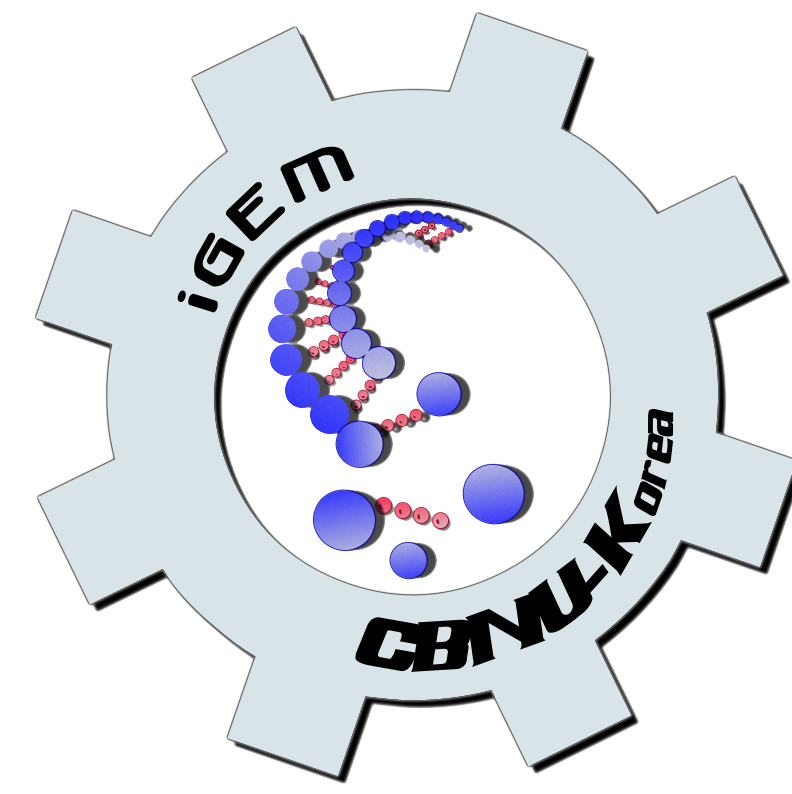Team:Waterloo/Project
From 2009.igem.org
(→Chromobricks: A Platform for Chromosome Engineering with BioBricks) |
(→Chromobricks: A Platform for Chromosome Engineering with BioBricks) |
||
| Line 27: | Line 27: | ||
== '''Chromobricks: A Platform for Chromosome Engineering with BioBricks ''' == | == '''Chromobricks: A Platform for Chromosome Engineering with BioBricks ''' == | ||
| - | + | The aim of our project is to develop a fully-featured platform for chromosome engineering, allowing the in vivo assembly of a synthetic chromosome from interchangeable parts, followed by selective degradation of the native chromosome. We have designed a proof-of-concept for chromosome-building that will use the site-specific integrase of phage ΦC31 to integrate a BioBrick into a defined locus of the <i>E. coli</i> genome. Six pairs of integrase-targeted <i>att</i> sites have been designed to be non-cross-reactive in order to support repeatable cassette-exchange reactions for chromosome building. We have also written software to model the integrase-mediated rearrangement of DNA molecules containing <i>att</i> sites, to aid the design of more elaborate chromosome-building systems. To selectively degrade the native chromosome we designed a nuclease-based, inducible genome-degradation system. In its simplest form, our system can be used to integrate biological devices into a chromosome in situations requiring stable copy number and selection-free maintenance. | |
| - | assembly of a synthetic chromosome from interchangeable parts, followed by selective degradation of the native | + | |
| - | chromosome. We have designed a proof-of-concept for chromosome-building that will use the site-specific integrase of | + | |
| - | phage ΦC31 to integrate a BioBrick into a defined locus of the <i>E. coli</i> genome. Six pairs of integrase-targeted | + | |
| - | + | ||
| - | reactions for chromosome building. We have also written software to model the integrase-mediated rearrangement of DNA | + | |
| - | molecules containing <i>att</i> sites, to aid the design of more elaborate chromosome-building systems. To selectively | + | |
| - | + | ||
| - | + | ||
| - | + | ||
== Project Details== | == Project Details== | ||
Revision as of 03:36, 11 October 2009
| You can write a background of your team here. Give us a background of your team, the members, etc. Or tell us more about something of your choosing. | |
|
Tell us more about your project. Give us background. Use this is the abstract of your project. Be descriptive but concise (1-2 paragraphs) | |
| Team Example 2 |
| Home | The Team | The Project | Parts Submitted to the Registry | Modeling | Notebook |
|---|
(Or you can choose different headings. But you must have a team page, a project page, and a notebook page.)
Contents |
Chromobricks: A Platform for Chromosome Engineering with BioBricks
The aim of our project is to develop a fully-featured platform for chromosome engineering, allowing the in vivo assembly of a synthetic chromosome from interchangeable parts, followed by selective degradation of the native chromosome. We have designed a proof-of-concept for chromosome-building that will use the site-specific integrase of phage ΦC31 to integrate a BioBrick into a defined locus of the E. coli genome. Six pairs of integrase-targeted att sites have been designed to be non-cross-reactive in order to support repeatable cassette-exchange reactions for chromosome building. We have also written software to model the integrase-mediated rearrangement of DNA molecules containing att sites, to aid the design of more elaborate chromosome-building systems. To selectively degrade the native chromosome we designed a nuclease-based, inducible genome-degradation system. In its simplest form, our system can be used to integrate biological devices into a chromosome in situations requiring stable copy number and selection-free maintenance.
 "
"

